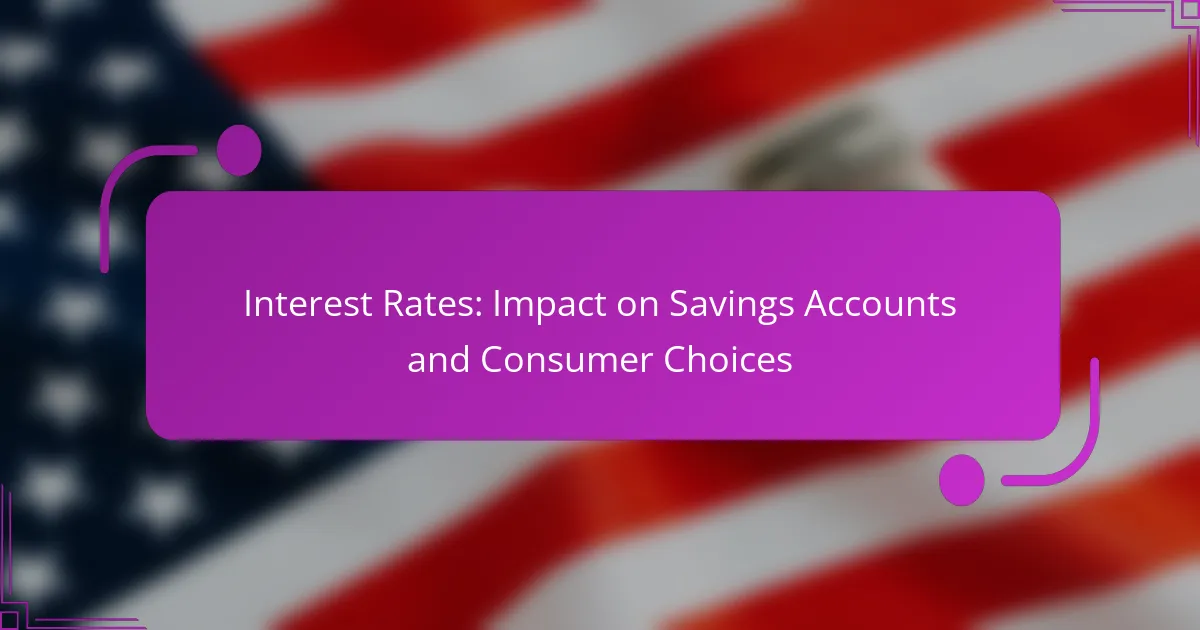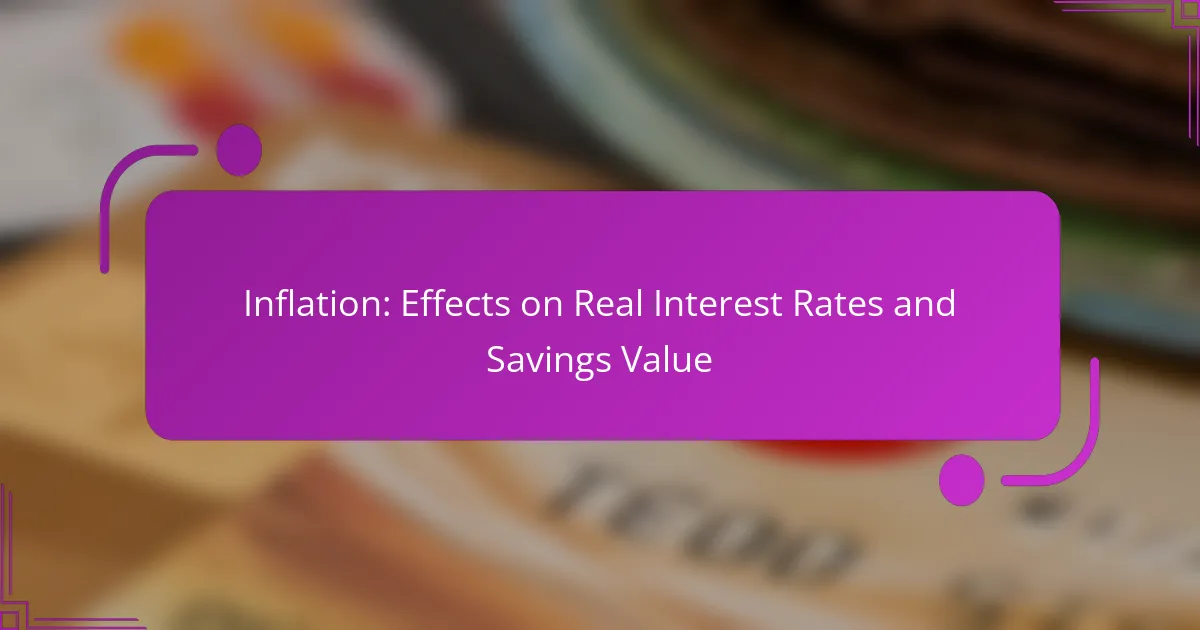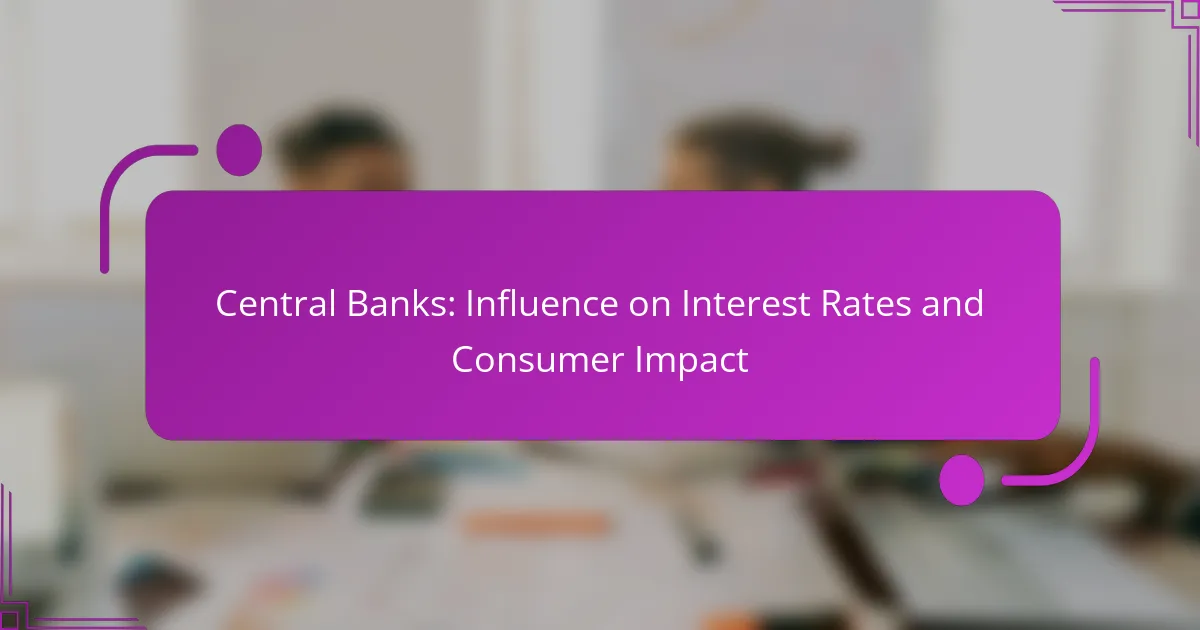Interest rates significantly influence the returns on savings accounts, affecting consumer choices in banking. As rates fluctuate, so do the yields offered by financial institutions, with current rates in late 2023 ranging from 0.01% to 4.00%. By comparing interest rates, fees, and account features, consumers can make informed decisions that align with their financial goals and maximize their savings potential.
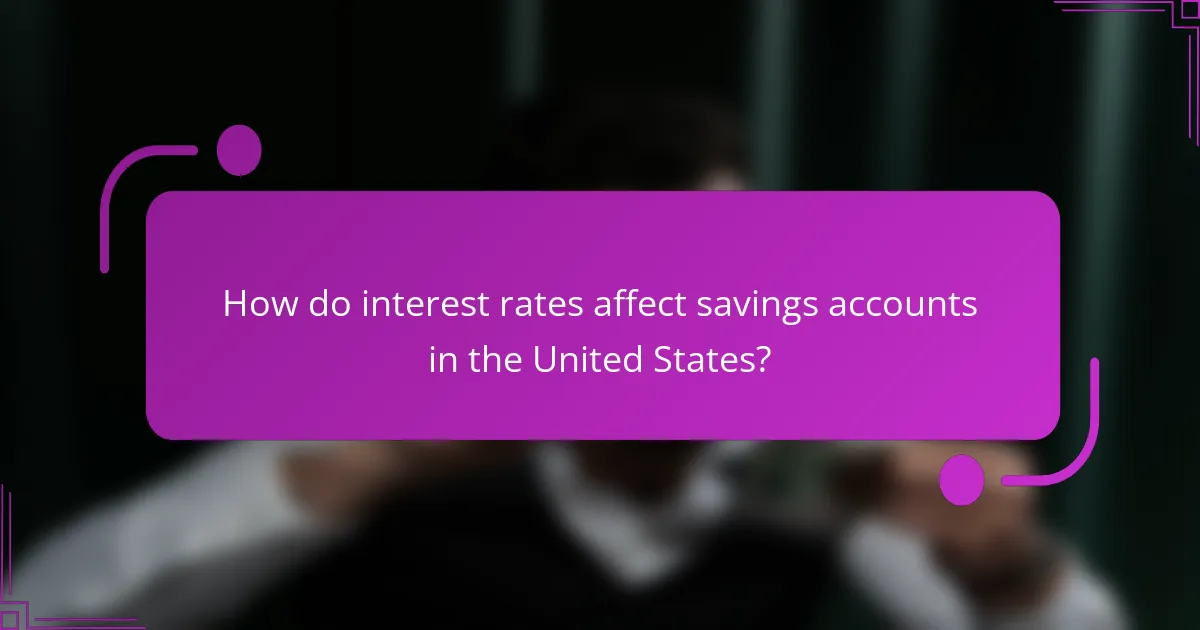
How do interest rates affect savings accounts in the United States?
Interest rates play a crucial role in determining the yields on savings accounts in the United States. When interest rates rise, the returns on savings accounts typically increase, making them more appealing to consumers.
Higher interest rates increase savings account yields
When interest rates are higher, banks often offer better yields on savings accounts to attract depositors. For example, a savings account that offers an interest rate of 3% can significantly increase the amount of interest earned compared to one with a rate of 0.5%. This can lead to a more substantial growth of savings over time.
Consumers should consider shopping around for savings accounts during periods of high interest rates. Many banks may offer promotional rates or higher yields for new accounts, which can enhance overall savings potential.
Lower interest rates reduce savings account attractiveness
Conversely, when interest rates are low, the yields on savings accounts tend to decrease, making them less attractive for savers. A savings account with a 0.1% interest rate provides minimal returns, which may discourage consumers from saving in traditional accounts.
In a low-interest environment, consumers might explore alternative savings options, such as high-yield savings accounts or investment accounts, which could offer better returns. It’s essential to evaluate the potential risks and rewards of these alternatives compared to standard savings accounts.
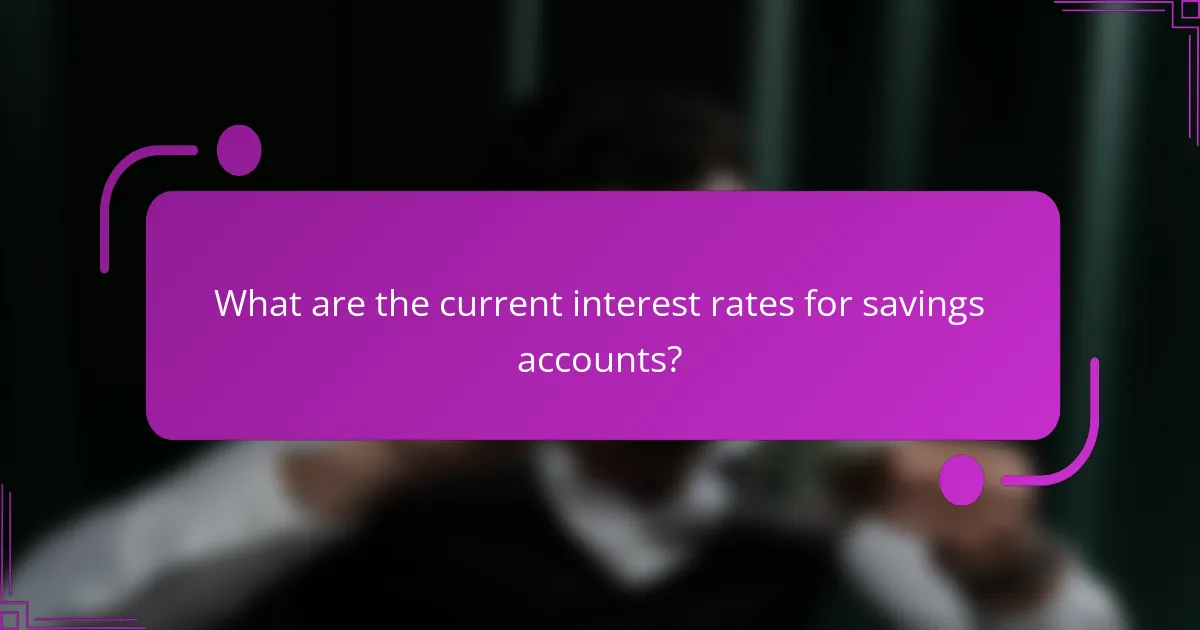
What are the current interest rates for savings accounts?
Current interest rates for savings accounts vary widely, generally ranging from low to moderate percentages. As of late 2023, many banks offer rates between 0.01% to 4.00%, depending on the institution and account type.
National average savings account interest rate
The national average savings account interest rate is a benchmark that reflects the typical rates offered by banks across the country. As of late 2023, this average hovers around 0.20% to 0.30%, though some online banks provide significantly higher rates.
When choosing a savings account, consider how the national average compares to what specific banks offer. Higher rates can lead to better returns on your savings over time, so it’s wise to shop around.
Comparison of rates from major banks like Chase and Bank of America
Major banks like Chase and Bank of America typically offer savings account interest rates that are lower than online banks. For instance, Chase may provide rates around 0.01% to 0.05%, while Bank of America often offers similar rates.
In contrast, online banks can offer rates exceeding 3.00% due to lower overhead costs. If maximizing interest earnings is your goal, consider looking beyond traditional banks to find better options.

How can consumers choose the best savings account?
Consumers can choose the best savings account by comparing interest rates, fees, and account features. Evaluating these factors helps ensure that the account aligns with financial goals and offers the best return on savings.
Evaluate interest rates and fees
Interest rates are a critical factor when selecting a savings account, as they determine how much your savings will grow over time. Look for accounts offering competitive rates, typically ranging from low to mid-single digits, depending on the economic environment.
In addition to interest rates, consider any associated fees that may reduce your overall earnings. Common fees include monthly maintenance fees, withdrawal fees, and minimum balance requirements. Aim for accounts with low or no fees to maximize your savings potential.
Consider account features and accessibility
Account features can significantly impact your banking experience. Look for options that offer easy online access, mobile banking, and automated savings tools. These features can enhance convenience and help you manage your savings more effectively.
Accessibility is also important; ensure that the account allows for easy deposits and withdrawals without excessive limitations. Some accounts may offer additional perks, such as ATM access or linked checking accounts, which can provide further flexibility in managing your finances.
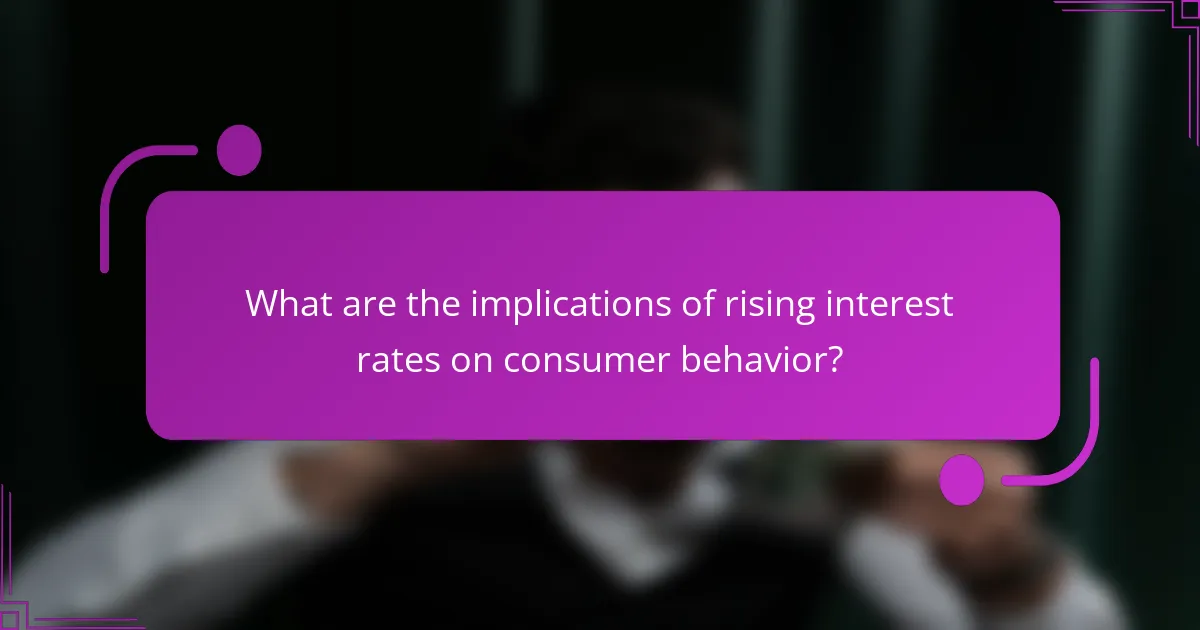
What are the implications of rising interest rates on consumer behavior?
Rising interest rates significantly influence consumer behavior by encouraging saving over spending. As the cost of borrowing increases, consumers tend to prioritize saving their money to take advantage of higher returns on savings accounts.
Increased savings rates lead to reduced spending
When interest rates rise, consumers often feel more inclined to save rather than spend. Higher savings rates provide a greater incentive to deposit money into savings accounts, which can lead to a decrease in discretionary spending. For example, consumers may delay large purchases or cut back on dining out to maximize their savings potential.
This shift can impact various sectors of the economy, particularly retail and services, as lower consumer spending may lead to reduced sales and slower economic growth. Businesses may need to adapt by offering promotions or incentives to encourage spending during periods of high interest rates.
Shift towards high-yield savings accounts
As interest rates rise, consumers are more likely to seek out high-yield savings accounts that offer better returns on their deposits. These accounts typically provide interest rates that are significantly higher than traditional savings accounts, making them an attractive option for savers. For instance, a high-yield account might offer rates in the range of 3-5% compared to the lower rates of standard accounts.
Consumers should compare different financial institutions to find the best high-yield savings options available. It is essential to consider factors such as fees, minimum balance requirements, and withdrawal limitations before making a decision. By choosing the right account, consumers can maximize their savings and benefit from the rising interest rates.
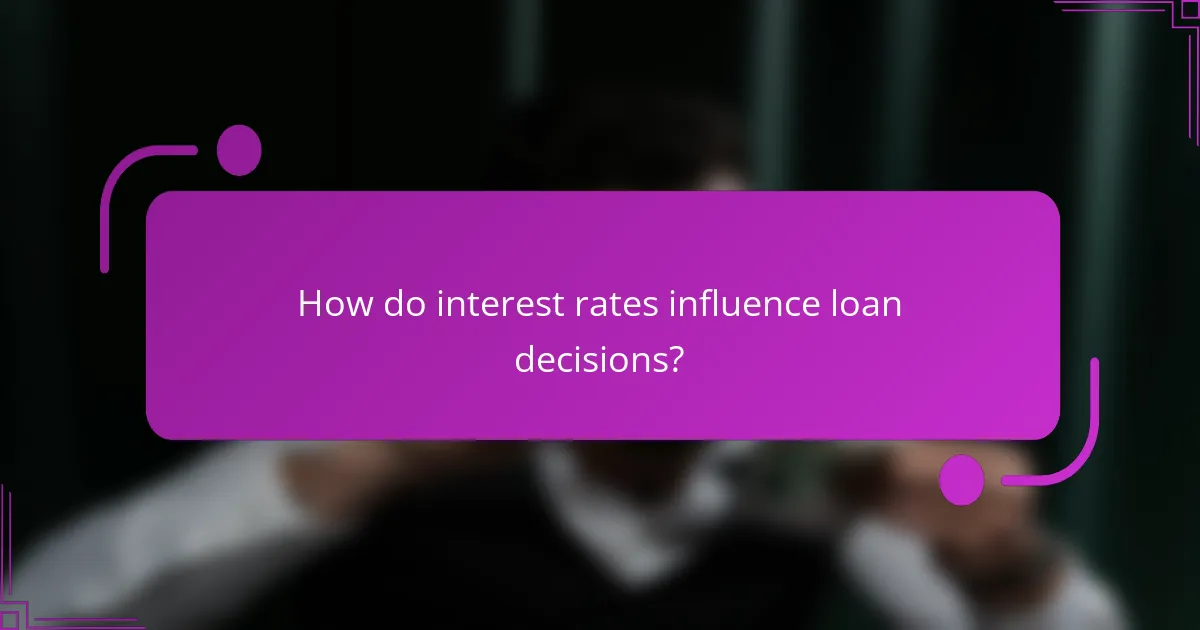
How do interest rates influence loan decisions?
Interest rates play a crucial role in shaping loan decisions by affecting the cost of borrowing. Higher rates typically lead to increased monthly payments, making loans less attractive, while lower rates can stimulate borrowing by reducing overall costs.
Higher rates discourage borrowing
When interest rates rise, the cost of taking out loans increases, which can deter consumers and businesses from borrowing. For example, a mortgage with a higher interest rate results in significantly larger monthly payments, leading many potential homebuyers to reconsider their purchase plans.
Additionally, higher rates can impact credit card debt and personal loans, as consumers may opt to delay large purchases or investments. This can slow economic growth, as reduced borrowing limits spending and investment opportunities.
Lower rates encourage refinancing options
Conversely, when interest rates decrease, borrowers often find refinancing their existing loans to be a beneficial option. Lower rates can lead to reduced monthly payments and overall interest costs, making it an attractive choice for homeowners and those with significant debt.
For instance, homeowners with a mortgage at a higher rate may refinance to lock in a lower rate, potentially saving thousands over the life of the loan. Consumers should evaluate their current interest rates against prevailing rates to determine if refinancing is a financially sound decision.
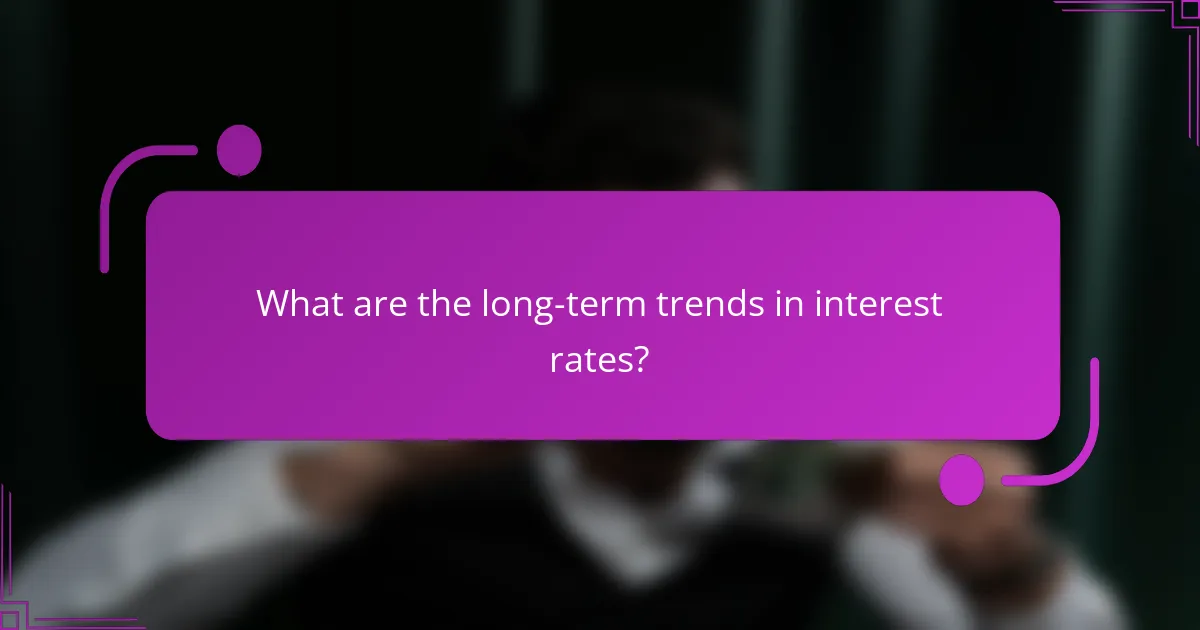
What are the long-term trends in interest rates?
Long-term trends in interest rates have generally shown a decline over the past few decades, influenced by various economic factors such as inflation, monetary policy, and global economic conditions. Understanding these trends is crucial for consumers making decisions about savings accounts and investments.
Historical trends in U.S. interest rates
Historically, U.S. interest rates have experienced significant fluctuations. In the early 1980s, rates peaked at around 20% due to aggressive monetary policies aimed at combating high inflation. Since then, rates have gradually decreased, reaching near-zero levels in the aftermath of the 2008 financial crisis and remaining low for several years.
In recent years, rates have started to rise again, reflecting a shift in monetary policy as the economy recovers. As of late 2023, rates are in the range of 4% to 5%, which is still relatively low compared to historical highs but represents a notable increase from the previous decade.
Future predictions based on economic indicators
Future predictions for interest rates are influenced by various economic indicators, including inflation rates, employment figures, and GDP growth. Analysts suggest that if inflation remains above target levels, the Federal Reserve may continue to increase rates to stabilize the economy.
Additionally, consumer spending and investment trends will play a crucial role in shaping future interest rates. If economic growth continues robustly, rates could rise further, potentially reaching 5% to 6% in the next few years. Consumers should stay informed about these trends to make better financial decisions regarding savings and investments.

How do interest rates impact inflation and purchasing power?
Interest rates significantly influence inflation and purchasing power by affecting the cost of borrowing and the return on savings. Higher interest rates typically reduce spending and investment, which can help control inflation, while lower rates can stimulate economic activity but may lead to increased inflation.
Interest rates as a tool for controlling inflation
Central banks use interest rates as a primary mechanism to manage inflation. By raising rates, they make borrowing more expensive, which tends to reduce consumer spending and business investment, thereby cooling off an overheating economy. Conversely, lowering rates can encourage spending and investment, potentially increasing inflation.
For example, during periods of high inflation, a central bank might increase rates from around 2% to 5% to curb price rises. This can lead to higher loan costs for consumers and businesses, which may slow down economic growth but stabilize prices.
When considering interest rates, consumers should be aware of their impact on savings accounts. Higher rates can lead to better returns on savings, making it more attractive to save rather than spend. However, if inflation outpaces interest rates, the real purchasing power of savings can still decline.
